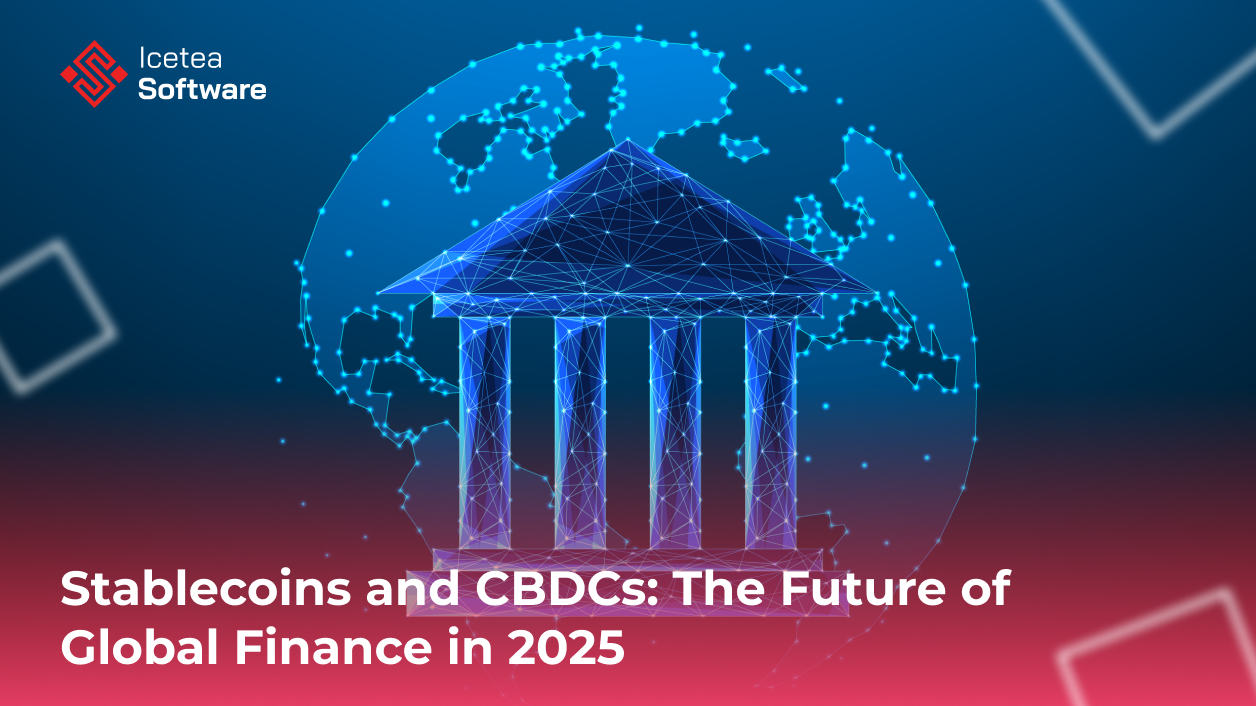Stablecoins and CBDCs: The Future of Global Finance in 2025
The financial world is experiencing a profound transformation, with digital currencies increasingly taking center stage. Among them, stablecoins and central bank digital currencies (CBDCs) are emerging as pivotal instruments that could redefine how money functions globally. Unlike traditional cryptocurrencies, which are often volatile, these digital assets are designed to offer stability, efficiency, and inclusivity in…
The financial world is experiencing a profound transformation, with digital currencies increasingly taking center stage. Among them, stablecoins and central bank digital currencies (CBDCs) are emerging as pivotal instruments that could redefine how money functions globally. Unlike traditional cryptocurrencies, which are often volatile, these digital assets are designed to offer stability, efficiency, and inclusivity in financial transactions. This article delves into the mechanisms, benefits, risks, and broader implications of stablecoins and CBDCs, offering insights into their potential to reshape the global financial system in 2025 and beyond.
Understanding Stablecoins
Stablecoins are digital currencies pegged to a stable asset, typically a fiat currency like the US dollar, euro, or Japanese yen. The key objective of stablecoins is to combine the advantages of cryptocurrencies—speed, decentralization, and borderless transactions—with the stability of traditional money.
For more details on stablecoins, see Investopedia: Stablecoin.
Types of Stablecoins
- Fiat-collateralized Stablecoins:
These stablecoins are backed by a reserve of fiat currency held by a central entity. For instance, USDC and Tether (USDT) are pegged to the US dollar at a 1:1 ratio. The reserve provides confidence that each stablecoin can be redeemed for its corresponding fiat value. - Crypto-collateralized Stablecoins:
Backed by other cryptocurrencies, these stablecoins maintain stability through over-collateralization and automated smart contracts. For example, DAI is backed by Ethereum-based assets and uses algorithms to maintain its peg. - Algorithmic Stablecoins:
These stablecoins rely on algorithms and smart contracts to automatically adjust supply and demand, maintaining a stable value without direct collateral. While innovative, they are generally more prone to volatility compared to collateralized stablecoins.
What Are CBDCs?
Central Bank Digital Currencies (CBDCs) are digital representations of a country’s fiat currency issued and regulated by its central bank. Unlike cryptocurrencies such as Bitcoin or Ethereum, CBDCs are legal tender and carry the full backing of the issuing government.
For more information, see BIS: Central Bank Digital Currencies.
Types of CBDCs
- Retail CBDCs:
Accessible to the general public for everyday transactions, retail CBDCs aim to complement cash and bank deposits. Examples include China’s Digital Yuan (e-CNY) and the Sand Dollar in the Bahamas. - Wholesale CBDCs:
Restricted to financial institutions for large-scale interbank transactions, wholesale CBDCs enhance the efficiency of settlements and reduce systemic risks.
CBDCs aim to modernize the monetary system, offering faster payments, reduced transaction costs, and improved transparency.
Key Drivers Behind Stablecoins and CBDCs
Several global trends are accelerating the adoption of stablecoins and CBDCs:
1. Financial Inclusion
Around 1.4 billion adults worldwide remain unbanked. Digital currencies offer a path to financial inclusion, enabling users to access banking-like services through smartphones without relying on traditional banks. For statistics, refer to World Bank Financial Inclusion.
2. Efficiency and Cost Reduction
Traditional cross-border payments can be slow and expensive due to intermediary banks and currency conversion fees. Stablecoins and CBDCs allow for instant settlement, reducing costs and friction in global payments.
3. Technological Advancements
Blockchain and distributed ledger technology provide a secure, transparent, and decentralized infrastructure. Smart contracts further enable automation, programmability, and innovative financial applications.
4. Monetary Policy and Control
CBDCs provide central banks with tools for real-time monitoring of money flows, enhancing the implementation of monetary policies and reducing illicit activities. They also allow for potential features like programmable money and negative interest rates if required.
Benefits of Stablecoins and CBDCs
Stability and Trust
- Stablecoins: By pegging value to fiat currencies, stablecoins reduce volatility compared to traditional cryptocurrencies, making them suitable for everyday transactions and store-of-value purposes.
- CBDCs: Being government-backed, CBDCs carry inherent trust and legitimacy.
Global Transactions
Stablecoins and CBDCs facilitate seamless cross-border payments without the need for complex banking networks. This is especially beneficial for remittances, trade settlements, and multinational corporations.
Financial Innovation
The rise of digital currencies encourages DeFi (Decentralized Finance) innovations, including lending, borrowing, and automated market-making, driving a new era of financial services accessible to everyone. See CoinDesk DeFi Insights.
Transparency and Security
Blockchain-based systems provide real-time, immutable records of transactions, reducing fraud and enhancing accountability. CBDCs can further integrate compliance and reporting requirements efficiently.
Risks and Challenges
Despite their potential, stablecoins and CBDCs pose challenges:
Regulatory Uncertainty
Governments are still developing legal frameworks to manage digital currencies. Regulatory gaps can lead to misuse, market instability, or conflicts between global jurisdictions. For a regulatory overview, see OECD CBDC Report.
Privacy Concerns
CBDCs, in particular, may allow governments to monitor transactions extensively, raising concerns about data privacy and potential misuse of financial data.
Operational Risks
Technical failures, cyberattacks, or design flaws in stablecoins or CBDC infrastructure could lead to systemic disruptions.
Competition and Market Dynamics
The coexistence of multiple stablecoins and CBDCs may create fragmentation, interoperability issues, and competition with traditional banking systems.
Global Adoption Trends
United States
The Federal Reserve is exploring a digital dollar, emphasizing payment efficiency while safeguarding privacy. Stablecoins like USDC and USDT are widely used in crypto markets and increasingly in commerce.
China
China leads with the Digital Yuan (e-CNY), aiming to strengthen financial control, enable cashless payments, and challenge the dominance of the US dollar in global trade.
Europe
The European Central Bank is piloting the digital euro to complement cash, improve payment efficiency, and maintain financial sovereignty within the Eurozone.
Emerging Economies
Countries like the Bahamas, Nigeria, and Cambodia have already launched CBDCs to enhance financial inclusion and modernize their payment systems.
Future Outlook
The adoption of stablecoins and CBDCs is likely to accelerate in the next decade due to:
- Increased digitalization of economies: With e-commerce, mobile banking, and online services booming, digital currencies provide a natural extension of financial systems.
- Cross-border collaboration: International standards and interoperability frameworks are being developed to enable seamless global transactions.
- Integration with DeFi and AI-powered finance: Stablecoins can serve as a bridge between traditional finance and decentralized ecosystems, enabling programmable money, smart contracts, and automated financial services.
- Shift in monetary power: CBDCs could reshape currency dynamics, influence exchange rates, and alter the balance of global economic influence.
Implications for Businesses and Consumers
For Businesses
- Faster transactions: Immediate settlements reduce working capital needs and improve cash flow.
- Reduced costs: Lower transaction fees compared to SWIFT and traditional banking networks.
- New revenue streams: Companies can leverage stablecoins in loyalty programs, cross-border sales, and financial innovation.
For Consumers
- Accessibility: Even those without bank accounts can participate in the digital economy.
- Efficiency: Quicker payments, lower remittance costs, and ease of use.
- Security: Blockchain-backed digital currencies offer transparency and fraud protection.
Final Thoughts
Stablecoins and CBDCs represent a major shift in the global financial system, blending the advantages of digital innovation with the stability and trust of traditional money. While challenges remain—such as regulatory frameworks, privacy concerns, and technological risks—the potential benefits for efficiency, financial inclusion, and economic modernization are immense. Governments, businesses, and individuals alike must prepare for a future where digital currencies are not just a novelty but a central pillar of everyday finance.
As the world moves towards a digital-first economy, understanding and adapting to the rise of stablecoins and CBDCs will be crucial for staying competitive and secure in the financial landscape of 2025 and beyond.
About Icetea Software
Icetea Software is a Vietnam-based technology firm specializing in scalable, secure, and future-ready solutions in Web3, AI, and digital transformation. With operations in Vietnam and Korea, the company supports global enterprises and startups through end-to-end technology services, infrastructure development, and innovation consulting.
𝗜𝗰𝗲𝘁𝗲𝗮 𝗦𝗼𝗳𝘁𝘄𝗮𝗿𝗲 – Revolutionize Your Tech Journey!
Website: iceteasoftware.com
LinkedIn: linkedin.com/company/iceteasoftware
Facebook: Icetea Software
X: x.com/Icetea_software






